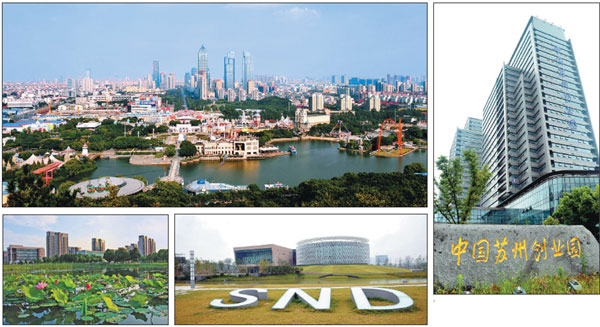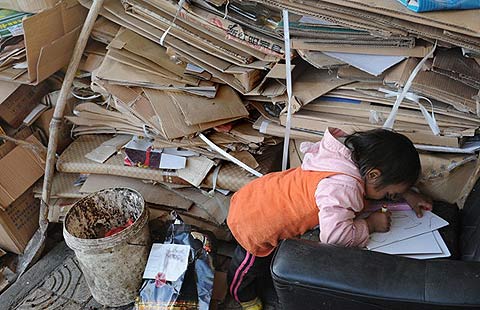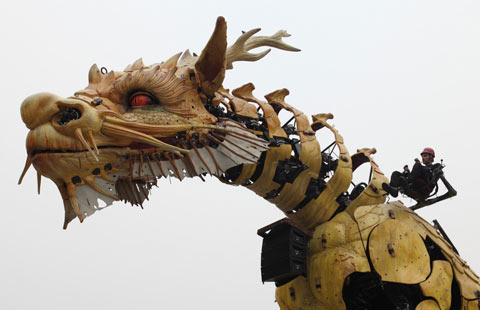Beautiful Suzhou flexes muscle
Updated: 2014-11-07 10:42
By Hu Haiyan and Zhou Furong(China Daily Europe)
|
|||||||||||
|
Clockwise from top left: A panoramic view of Suzhou New District, which was established in 1992 and is currently promoting new emerging industries; one of several research and development centers at SND; the campus grounds for Suzhou Science and Technology Town, an industrial park located in the district; and the area's surroundings blend serene natural beauty with innovative industrial clusters. Photos Provided to China Daily |
City famed for its physical beauty shows that its strength is more than skin deep
When Robert Bestche arrived back in the city of Suzhou in September after a three-year absence he got a huge surprise. The 36-year-old German had worked there for about two years until 2011 before returning to work in the headquarters of Knorr-Bremse in Munich.
"Though it had been just three years since I left SND in 2011, I could not even recognize many places because it had developed so fast," he says.
Betsche is referring specifically to Suzhou New District, an industrial and technological site covering 260 square kilometers that is five kilometers from the city.
"Life here is comfortable and business is thriving. Living and working in it makes me feel at home."
Bestche, director of supply chain management for Knorr-Bremse Systems for Rail Vehicles (Suzhou), says the district has a very international flavor, and its rapid growth reflects that of the city itself.
The industrial and technological prowess that Suzhou is now asserting contrasts with its renown as a languid city of natural beauty. With its many canals, it has been compared to Venice, and in March it won the Lee Kuan Yew World City Prize, for its "outstanding contributions toward creating livable and sustainable urban communities".
Suzhou New District, full name Suzhou National New and High-Tech Industrial Development Zone, and a Sino-Singaporean co-founded industrial park are two areas that are helping the city flex its innovative muscle.
Nevertheless, Suzhou New District basks in the city's esthetic beauty, being located to the east of Taihu Lake, a well-known local scenic attraction, and a few other scenic spots such as Stone Lake and Dongting Lake not far away.
Suzhou New District was set up in 1992 and now covers about 260 square kilometers, 3 percent of Suzhou's total area, and 5 percent of the city's population lives there.
Its GDP in the first nine months of the year was 71 billion yuan ($11.6 billion; 9.3 billion euros), 9 percent more than last year. The aggregate value of imports and exports was $27.6 billion, 4.9 percent more than in the corresponding period last year.
Zhou Xudong, director of Suzhou New District's management committee, attributes the growth to the fact that Suzhou New District is promoting the sustained growth of new industrial clusters.
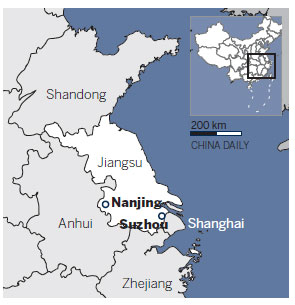
"Suzhou New District has adopted a 4+2 industrial strategy, meaning it is putting a great deal of effort into promoting four emerging industries, new-generation information technology, rail transport, new energy and medical devices, and revitalizing two long-established industries, electronics and equipment manufacturing," says Zhou.
"In recent years we have stuck to a two-wheel drive approach to developing manufacturing and modern service industries such as finance and trade, science and technology, modern logistics, and others to maintain stable growth in the economy," Zhou says.
The district has also made some progress in changing and upgrading its industrial mix. Profit in new industries was 4.97 billion yuan in the first nine months of the year, almost 60 percent more than the corresponding period last year.
About 1.5 million square meters of the district has been set aside for scientific incubators and industrialization promotion areas, including Suzhou Innovation Park and Suzhou Science and Technology Town.
By upgrading the industry mix, the district has gained growth momentum, attracting many European and US companies while maintaining a livable and sustainable environment, Zhou says.
By the end of last year foreign-invested companies had total registered capital of $22.3 billion in the district, and more than 2,185 foreign companies were represented there. North American and European investment accounts for about 30 percent of the total.
Cao Xiaosu, vice-director of the district's European and US investment promotion bureau, says that rather than being preoccupied by companies with high production volumes, it puts a premium on attracting high-tech and green companies.
GSE Environment Group, the largest producer worldwide of geomembrane, used in geotechnical engineering, is one of them.
"Geomembrane's business grew strongly in some developed countries in the 1970s, but it was only relatively recently that it has taken off in China," says Wang Yingzhou, 40, operations manager of GSE Environment Group in China.
"Suzhou New District is keen on environmentally friendly businesses like us, which is why we decided to come here."
The company arrived in Suzhou a little more than two years ago and employs 48 people. Its first made-in-Suzhou products rolled off the production line about nine months ago and sold in Mongolia and China.
"Eventually we will be exporting to all Asia-Pacific markets," Wang says. One of Suzhou's biggest assets is its proximity to Shanghai, which is a huge advantage with logistics, he says.
"Another thing is that after many years' development Suzhou New District has a lot of experience to offer foreign companies. As a high-tech company we also benefit fromfavorable encouraging measures for manufacturing environmental products and some taxation reduction."
By the end of next year the company hopes its sales revenue from Suzhou will be about 100 million yuan a year compared with 30 million yuan now, he says.
"With the increasing demand for products aimed at protecting the environment, we will increase the number of production lines from one to three over the coming five years."
Wu Yi, 44, general manager of Ondal Medical Systems (Suzhou) who is also chairman of DUSA European Association Suzhou, a nonprofit business group, says the district is an ideal place for developing high value-added small and medium-sized companies.
"For SMEs like us this district is similar to other development zones, particularly given that labor is cheaper and factory rents are lower."
The group, which was founded in the district by several German companies 12 years ago, has more than 160 company members, of which 65 percent are German and 30 percent from the district.
Ondal, whose headquarters are in Huenfeld, central Germany, and which develops and makes medical equipment, had turnover of $94 million last year. Wu says the group's customers and suppliers are mainly based in the Yangtze River Delta, and the company's location in Suzhou puts it within easy reach of them.
The company set up shop in the district in 2008, and the main responsibilities of its staff of 25 are sales in China and the Asia-Pacific region. It recorded sales revenue of $7.5 million last year.
Gao Xiaogang, general manager of Georg Utz Materials Handling (Suzhou), is another who lauds Suzhou New District as an ideal business location. The Swiss parent company, which was founded in 1947, specializes in returnable plastic packaging and has eight companies in seven countries and distributors in more than 40 countries.
Its global sales revenue was 200 million euros last year, and it employs about 1,000 people worldwide.
Gao, 54, says he was first drawn to the idea of setting up business in Suzhou New District in 1997 when he visited it as the representative of an international healthcare company.
"Suzhou New District is much more customer-oriented than many other industrial parks, and the authorities are efficient and helpful. The space available and the practical logistics are other big attractions."
Utz has been in Suzhou for about a year and employs about 30 people, and that is expected to grow, Gao says.
"The materials handling industries with returnable & recyclable plastics materials in China have developed a lot in recent years. Given the market's huge potential, we are confident our business will grow rapidly."
Utz Suzhou plans to spend about $45 million to buy land in Suzhou New District to build factories, he says.
"Our customers are mainly located in the Yangtze River Delta, and our being here helps us stay in touch with them."
Justin Harkiewicz, vice-president and general manager of Fellowes Office Products (Suzhou), says having its operations in the district means it can achieve a good balance between employing talented people and keeping costs under control.
The group has operations in 18 places worldwide and sells its products in 110 countries. Fellowes set up shop in Suzhou in 2011 and is now the headquarters of Fellows China. It is said to be the biggest paper shredder manufacturing center in the world.
Last year, the Suzhou operations had sales revenue of 200 million yuan, and that is expected to double over the next five years, Harkiewicz says. Home paper shredders are rare in China, but their sales are expected to grow as people become more conscious of document security, he says.
The company is also doing research on producing air purifiers, Harkiewicz says.
Suzhou has much to boast of with its complete industry chains and availability of skilled people, he says, and that augurs well for his company's expansion.
"In making a shredder you need about 300 components, and that demands highly qualified people as well as companies in related businesses, and in that regard Suzhou is more than a match for the task."
Contact the writers throughhuhaiyan@chinadaily.com.cn
(China Daily European Weekly 11/07/2014 page16)
Today's Top News
China, Russia agree on military coop projects
Faster pace set in bid to protect Internet
US, France cite concerns about Iran nuclear talks
China donates $2 million to WHO to combat Ebola
Policy banks to lead Silk Road infrastructure fund
Ukraine's rebel leader sworn in
World Cup-winning captain succeeds coach at Evergrande
Ukraine rebels announce results of 'elections'
Hot Topics
Lunar probe , China growth forecasts, Emission rules get tougher, China seen through 'colored lens', International board,
Editor's Picks

|

|

|
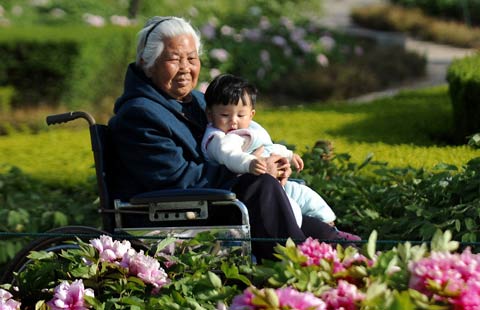
|

|
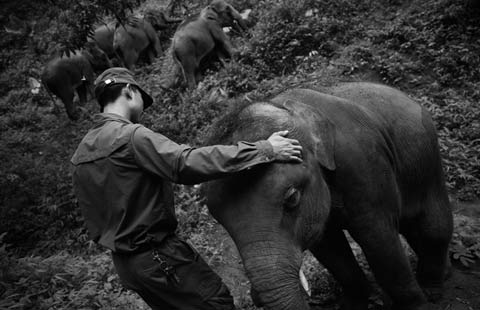
|
